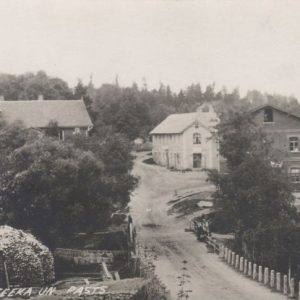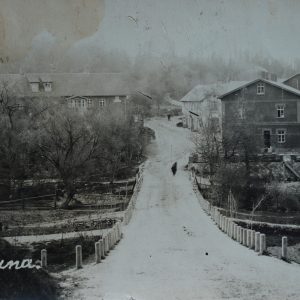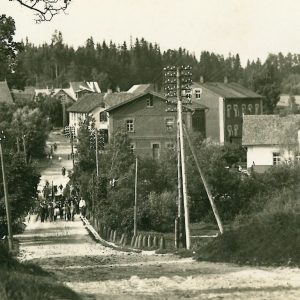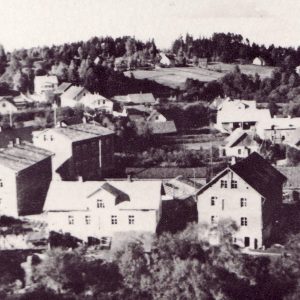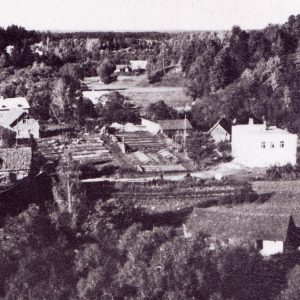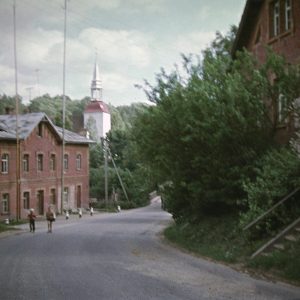Rauna “Pārupe” (Left Bank)
Locals have named the urban district on the left bank of the Rauna river “Pārupe” (Left Bank), and, until 1951 this part of Rauna urban territory was considered to belong to Baižkalns Parish. Until 1951, when Baižkalns Parish was merged with Rauna Parish, the Rauna river served as the border of two parishes – Rauna and Baižkalns parish.
Building in the “Pārupe” or left bank started in early 20th century – in the 20s, and, to a certain extent, it is considered to constitute the historical construction of Rauna inhabited area. One of the first houses on the left bank of the river was the building in Valmieras iela 7, which was formerly called Tušs Pharmacy. The development of Rauna “Pārupe” construction was promoted by the decision of Rauna Church Convent of 1909 to divide the land in possession of the sexton-organist of the congregation into 15 smaller parts and to issue the land plots into lifelong rent. The project of land division was developed by the sworn land surveyor of Livonian Knighthood K. Ķuze, a relative of the famous candy industrialist V. Ķuze.
The most interesting story is associated with the bridge over the Rauna river, which leads to “Pārupe”. According to the stories of locals, this bridge suffered during the World War II. As the Nazi army retreated, the bridge over the Rauna river was blown up. As a result of the explosion, houses that stood closer to the river suffered as well. The building in Jaunatnes iela 2 or Skujiņmāja house sloped to the one side slightly and this inclination of the house is still visible today. For some time, Rauna existed without a bridge and crossing of the river was possible in the area, where the stream is the slowest – to the left from the location of the current bridge.
Gallery
Travel objects
- Rauna Castle
- Rauna Castle Courtyard
- Rauna Park and Rauna Manor Estate
- Rauna Evangelic Lutheran Church
- Rauna Agricultural Society House
- Rauna Freedom Monument
- Rauna Mill
- Strads Pub / Rauna Dairy
- Plūme House / Bookshop
- Rauna Parish House
- Rauna Congregation School / Office of Sarkanais Oktobris Collective Farm
- Rauna Devil’s Cave
- Rauna Staburags (Staburags Cliff of Rauna)
- Jānis Cimze Monument
- Rauna “Pārupe” (Left Bank)
- Baižkalns Manor Estate
- Lauktehnika (Agricultural Equipment Station)
- House of Doctor’s Skaidrais Family / House of psychotherapist Jānis Zālītis
- Rauna Hospital
- Rauna Post Office
- Rauna Pastor’s Manor
- The Centre of Rauna and the visit of USSR leader Nikita Khrushchev
- Rauna Cemetery
- Cemetery of Soviet Soldiers, who Died during the World War II
- Rauna Castle Tower
- Intermediate Passages of Rauna Castle
- Rauna Castle Plastering
- Heating and Smoke Channels of Rauna Castle

